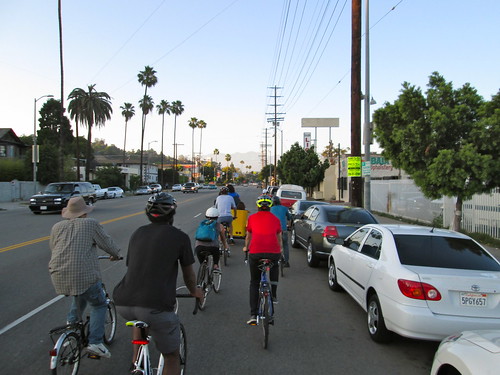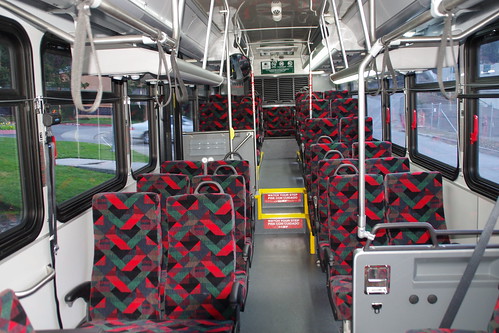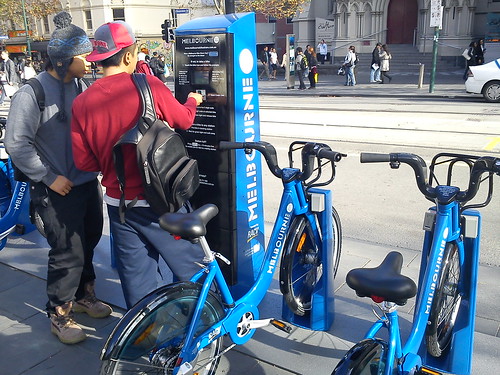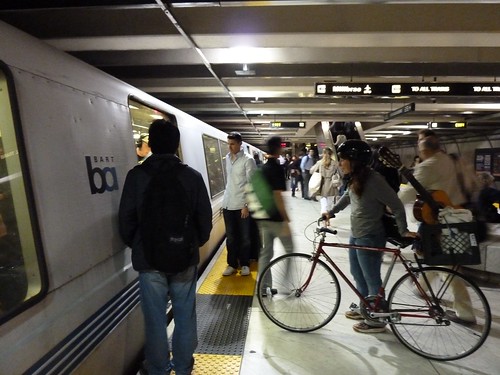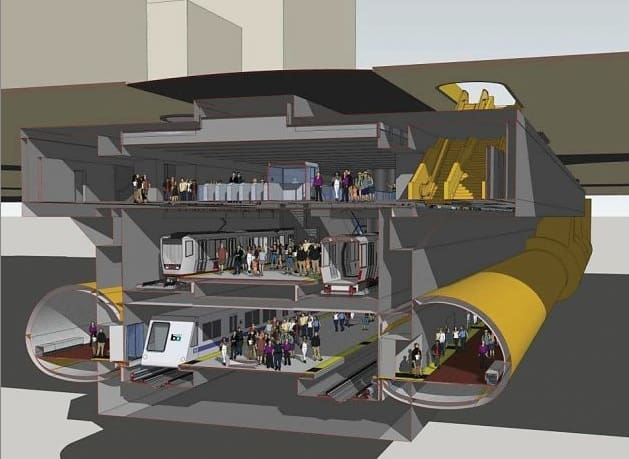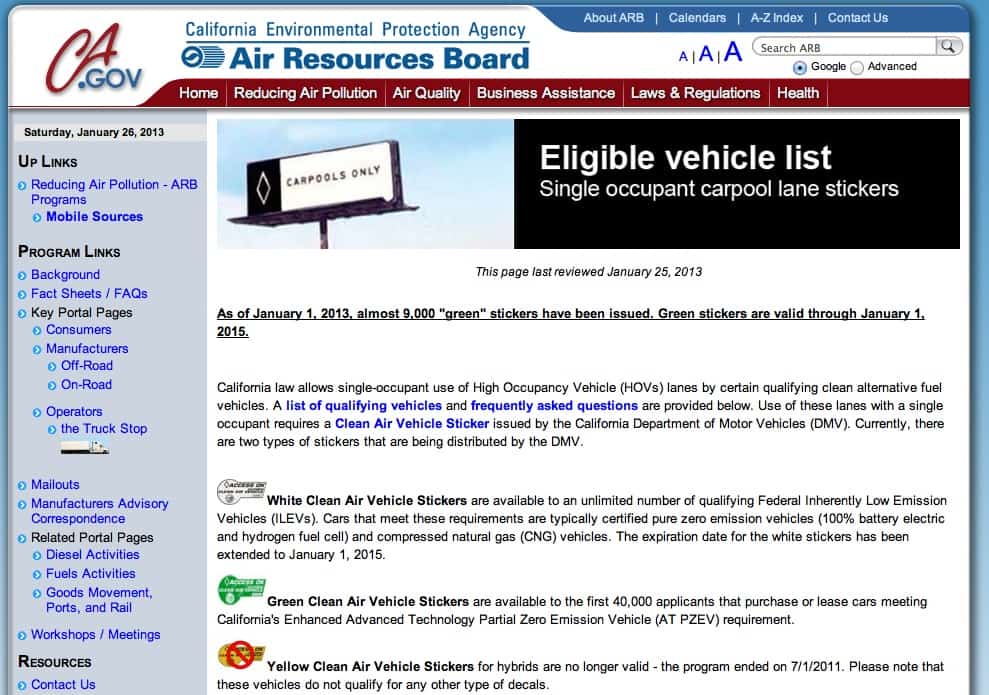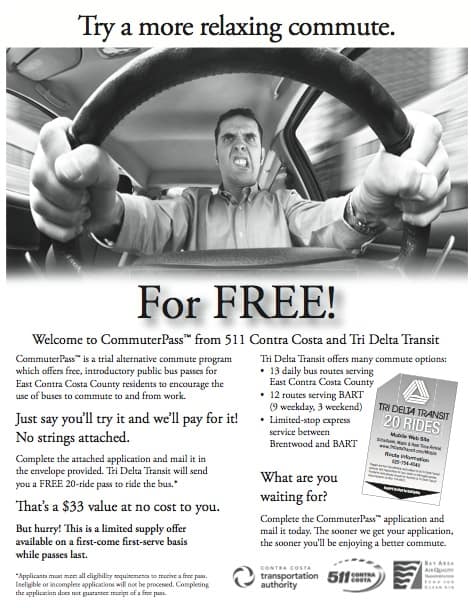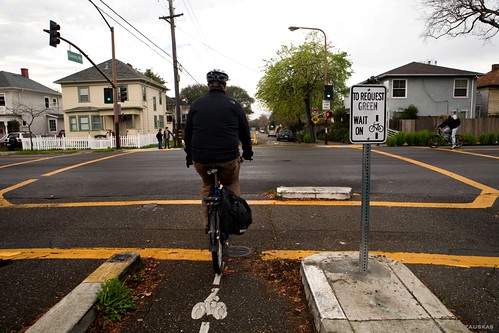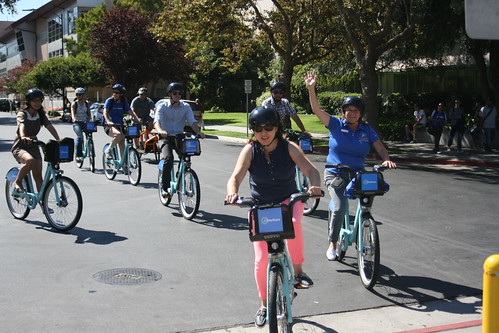
Will the streets of the Bay Area soon be full with a sea of bike-share commuters cycling that last mile from BART to the workplace? Only time will tell. Photo credit: Richard Masoner
The Bay Area is not new to transportation innovations. Last year, we celebrated four successful decades of the visionary commuter rail known as BART, which stills sees climbing ridership and continues be seen as a model of sustainable transportation for the rest of the nation. Coincidentally, last year also marked the 75th anniversary of another incredible Bay Area infrastructural transportation monument, the Golden Gate Bridge.
Today, the Bay Area is leading the way in California again*, albeit with a subtler and humbler infrastructural feature, but one that nonetheless has the potential to hugely impact the way we move– Bay Area Bike Share. Bay Area Bike Share just launched Thursday, August 29th, so the system is merely in its infancy, but similar systems have been around Europe for a while in cities such as Paris and London, and New York City was recently graced with its own iconic bike share earlier this year. Stateside, bike-share programs so far has proven to be surprisingly successful, especially in New York and D.C. Here in the Bay Area, bike share seems to have great potential to compliment our existing excellent regional public transport system, which is perhaps why Bay Area Bike Share is initially launching in Downtown San Francisco and along the Caltrain corridor in Redwood City, Palo Alto, Mountain View and San Jose.
Here’s how the system works:
- Get a Bay Area Bike Share Membership (or pay for a single day use, but longer membership quickly pay off).
- Use Annual Member key or enter your Ride Code (provided to 24-Hour and 3-Day Members) to unlock a bicycle from any station.
- RIDE – Run errands, ride to and/or from your BART station, commute to work, or just go for a spin and use it as a gym membership of sorts!
- Return the bike to the nearest station.
- Repeat steps 2 through 4. Remember, any trip under 30 minutes is free– and yes you can simply dock a bike and check out a new one for another 30 minutes of charge-free cycling.
Bike-share bikes are NOT intended for long trips and the pricing system reflects this. For example, using a Bay Area Bike Share bike for an hour and a half before returning it to a station, will cost you $12 in addition to your membership fee. Any trip under 30 minutes, however, is completely free after membership fee is paid.
So what are bike share bikes good for? Going to meetings or grabbing a bite to eat on your lunch break; cycling from a BART station to your office (at the moment, most downtown San Francisco BART stations have bike share stations nearby); replacing bus trips under three miles with a bike ride; avoiding having to bring your own bike on BART; the infamous last-mile… The possibilities are many, and as long as your journey takes less than 30 minutes (keep in mind, at a “no sweat” pace, one can easily cover at least three miles on a bicycle), using a Bay Area Bike Share bicycle is free. Because of this structuring, getting an annual membership is particularly enticing as it can save you money, especially if you use it to replace short bus trips and cab rides when getting around congested parts of San Francisco.
So what do you think– are you ready to take a Bay Area Bike Share bicycle for a spin?
For additional information, check out Bay Area Bike Share’s Frequently Asked Questions or Contact page. And if you are on social media, feel free to check out Bay Area Bike Share on Twitter, Facebook, Tumblr or Instagram.
*While Bay Area Bike Share is not the first bike share system to launch in California, it is by far the largest and is also distinguished in that it is regional and not confined to a single city, integrating the system well with our existing public transportation network and commuter routes.
